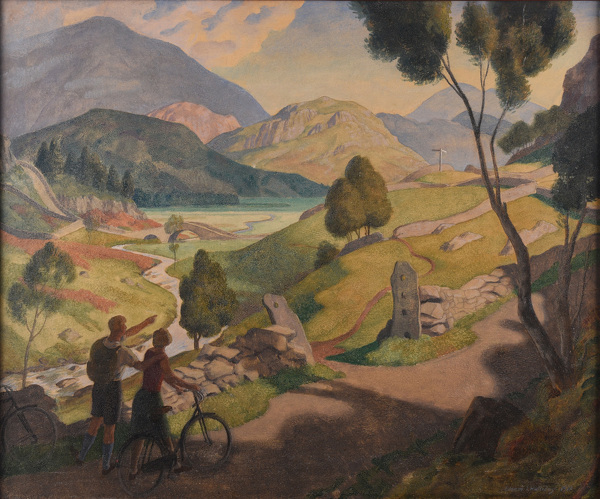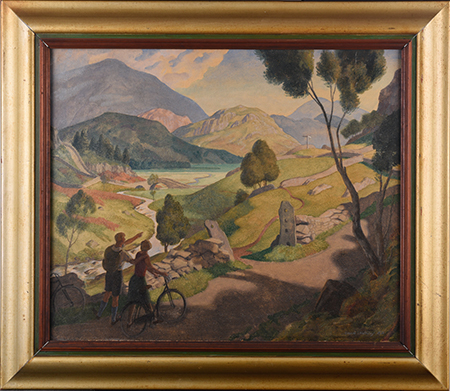

 Hover over the painting to magnify (there may be an initial delay while the magnified image is loaded)
Hover over the painting to magnify (there may be an initial delay while the magnified image is loaded)Edward Irvine Halliday (1902-1984):
Above Seath Waite, May 1932
Framed (ref: 7039)
Signed and dated May 1932
Inscribed on reverse "to William Knight Jr, May 1933"
Tempera on board
20 x 24 in. (51 x 61 cm)
See all works by Edward Irvine Halliday panel tempera landscape leisure Modern British Art at Mercers' Hall
Provenance: William Knight 1933-1965, thence by descent

Above Seathwaite fits into a genre of British art which emerged between the two World Wars. Government initiatives to improve the heath of the nation, and independent organisitions such as the Sunlight League and New Health Society, emerged. Exercise and sunbathing became popular as statuary holidays were enshrined in law. James Walker Tucker, Harry Epworth Allen, Bernard Fleetwood Walker, Ralph Chubb and Halliday were amongst many artists who recorded the ramblers, hikers, cyclists and picnickers who now swarmed into the countryside. ‘This generation is inaugurating a new return to nature’, wrote the Northern Daily Mail in 1927. ‘It turns its face increasingly to the country for fresh air and exercise and for the refreshment of the mind no less than the body’. Reviewing an exhibition of Chubb's work at the Goupil Gallery in 1929, The Times considered that this phenom resembled the same spirit found in the work of William Blake (1757 – 1827) with its interest in ‘spiritual delight, mental pleasures ....serene physical health and beauty and activity.....in perfect scenery beneath the sun, with freedom'.

 Rome Scholars
Rome Scholars SOLD
SOLD




